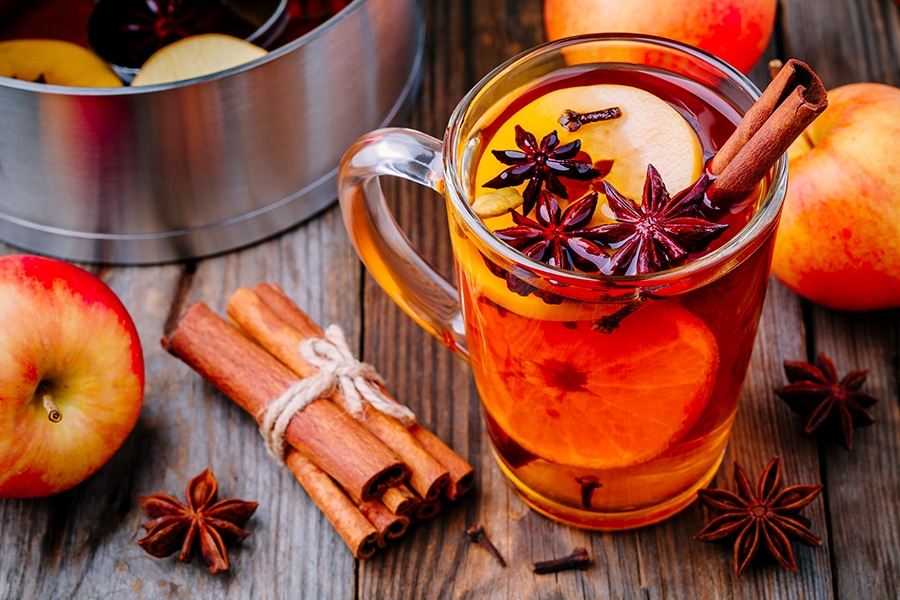
Bored of mulled wine? Here are 5 other alcohols that can be served warm
When the temperature outside drops, nothing beats sipping a warm beverage during the aperitif hour
 Warm sake is an art in Japan, so much so that there are different recommended temperatures depending on the taste experience you wish to achieve.
Warm sake is an art in Japan, so much so that there are different recommended temperatures depending on the taste experience you wish to achieve.
Image: Shutterstock
A nice cool foam on a beer, whisky on ice, vodka on the rocks... There are a slew of options when it comes to consuming a chilled or even icy alcoholic beverage. However when the temperature outside drops, nothing beats sipping a warm beverage during the aperitif hour. So instead of serving mulled wine during your festive gatherings, here are five unexpected warm beverages.
Cider
Less expected than wine, cider can also be served warm. One recipe consists of flavoring the tasty apple-derived beverage with orange slices, cinnamon, star anise, cloves or nutmeg. Culinary stylist Claire from the blog Caillebot adds a twist that is sure to convince even skeptics to try cider at aperitif hours. After heating up a liter of cider with fresh ginger, apple and cinnamon, the author adds an unexpected accent to her preparation by pouring in a tablespoon of... rum.Saké
Japan's famous rice alcohol is consumed at various temperatures. In fact, drinking hot sake is a tradition in the Land of the Rising Sun that dates back to before the 12th century. There's even a special term for drinking saké hot: kanzake. Purists will advise you not to heat the Japanese beverage in the microwave, but rather in a tokkuri or saké bottle and then in a double boiler to get as close as possible to the traditional method. Using a kitchen thermometer is recommended for obtaining the desired temperature. The Japanese have actually established a heating chart and each level or temperature range corresponds to a different taste experience. At 30°C, it is a "hinata-kan" warm saké, which subtly enhances the aromas, because the temperature is close to our body temperature. At 45°C, the sake is termed "jyou-kan" and the aromas intensify. At the end of this scale, sake heated to 55°C is called tobikiri-kan. At this level, the sake becomes very dry and flavors are increased tenfold. It's important not to over-indulge in hot sake, as some anecdotal reports suggest that warm alcohol can be absorbed by the body faster.Beer
Purists will likely be scandalized at the idea of heating their beloved foam! And yet, it is indeed a Polish tradition that even has a name: Grzaniec, specifically grzane piwo. The wintertime tradition involves warming up with a recipe that contains lager combined with brown sugar, egg yolks and quintessential winter spices of cinnamon, ginger and cloves. And don't forget to serve it in a glass with a slice of orange.
X







